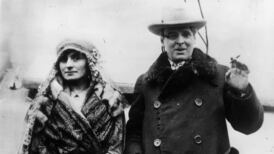Cocaine use is continuing to rise, crossing all social strata and affecting every region, according to a new report.
The report, from the National Advisory Committee on Drugs (NACD) and the National Drugs Strategy Team, published yesterday, draws on several sources to conclude that cocaine use in the Republic is on the increase.
It highlights that the number of drivers in the State testing positive for cocaine use increased from nine in 2002 to 86 in 2005. The testing was carried out by the Medical Bureau of Road Safety (MBRS) which tests specimens provided under the Road Traffic Act.
The initial analysis is carried out to determine the alcohol concentration in the specimen. If the result is under the limit for alcohol the specimen is then analysed for the presence of drugs.
The report also states that the number of patients admitted to hospital in 2004 with cocaine dependence as their primary or secondary diagnosis was 222, up from 52 in 1999.
In addition, some 3 per cent of urine samples sent by GPs to Beaumont Hospital for analysis in 2005 tested positive for cocaine compared to 0.5 per cent in 1998.
The number of offences detected by the Garda under the Misuse of Drugs Act increased from 11 in 1990 to 1,225 in 2005. Of the offences detected in 2005, more than 500 were in the Dublin region and 226 were in the south- ern region, followed by 88 in the southeast and 44 in the west.
The report says the number of seizures of cocaine by the Garda and Customs and Excise officers is also on the rise. The number of seizures by the Garda increased from 213 in 1999 to 968 in 2005 and the number of seizures by Customs and Excise officers increased from 12 in the year 2000 to 46 in 2005.
It states that the numbers seeking treatment for cocaine problems are also increasing. Figures from the National Drug Treatment Reporting System indicate the number of new cases seeking treatment for cocaine as a primary drug increased from 33 in 2000 to 157 in 2003, and the number of new cases reporting cocaine as an additional problem drug increased from 189 in 2000 to 443 in 2003.
NACD chairman Dr Des Corrigan said all the indicators point to a continued increase in cocaine use, that this use crosses all social strata and that the impact is very much experienced nationally. "Communities are experiencing the consequences in sharp increases in public disturbance, noise, intimidation and violence. Individuals are experiencing the consequences in terms of disrupted personal relationships, employment, income as well as physical or mental ill-health," he said.
He added that the actual prevalence of cocaine use in Ireland at present was unknown, but a study of this is being conducted, with the results due in September. "We're expecting that there's going to be a significant increase in the proportion who have tried the drug and the proportion who have gone on to use it regularly," he said.
A previous study in 2003 found 3 per cent of the adult population had used cocaine at some time in their lives and 1 per cent had used it in the previous year.
Asked what factors were leading to increased cocaine use Dr Corrigan said: "I think you've got to say affluence is one, availability is the other crucial thing, and the other thing is I think probably a change in the national mindset in terms of using pleasurable drugs".
Editorial comment: page 19









